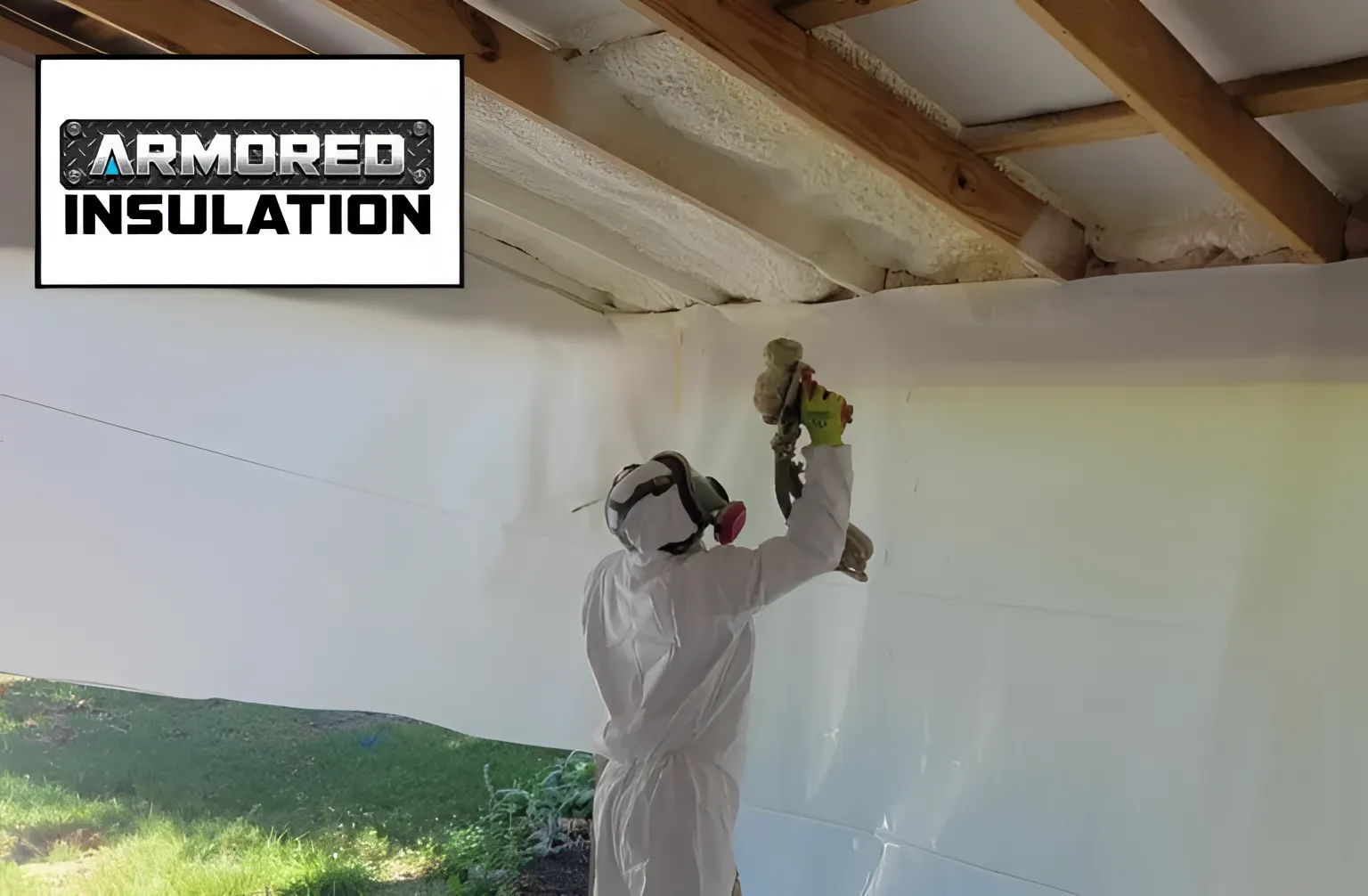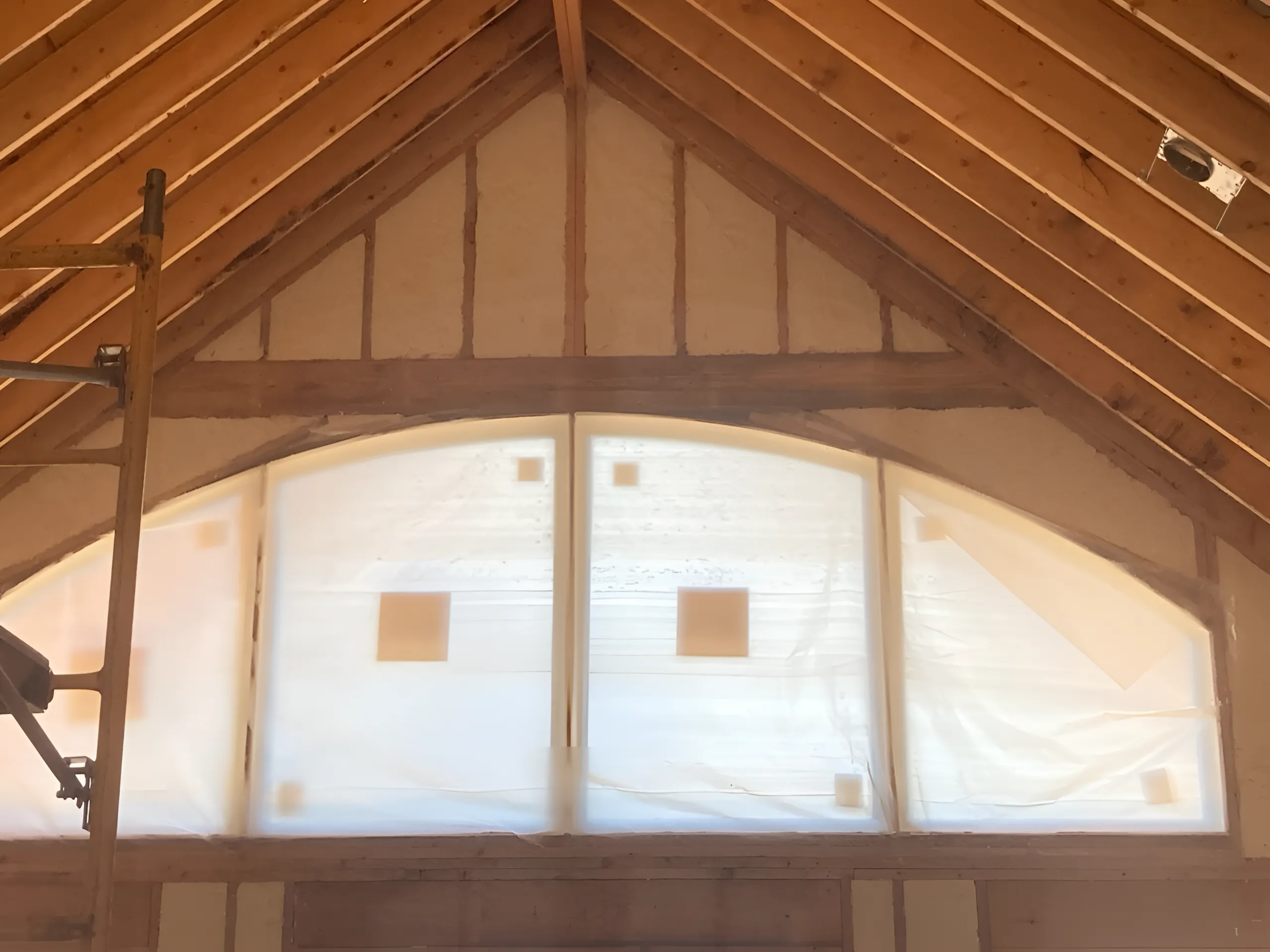
Closed-cell and open-cell spray foam serve different roles in residential and commercial insulation. Closed-cell provides higher structural strength, water resistance, and air sealing. Open-cell offers cost-effective coverage, flexibility, and sound absorption. The choice between them should depend on climate, structural needs, moisture exposure, and specific building code requirements. Understanding the performance differences helps make informed decisions based on actual needs rather than general preferences.
This comparison reflects field-tested outcomes from properties across humid, mixed-humid, and cold climates in Kentucky and surrounding regions. The data below is drawn from building performance evaluations, material spec sheets, and regulatory standards. Armored Insulation uses these materials under varied use cases and knows the practical limitations and advantages of each.
| Feature | Closed-Cell Foam | Open-Cell Foam |
|---|---|---|
| Core Density | ~2.0 lbs/ft³ | ~0.5 lbs/ft³ |
| R-Value (per inch) | 6.5 – 7.0 | 3.5 – 3.8 |
| Moisture Permeability | Low (acts as vapor barrier) | High (vapor permeable) |
| Structural Rigidity | High (adds wall racking strength) | Low (compressible) |
| Sound Dampening | Moderate | High |
| Expansion Rate | ~1x | ~100x |
| Application Thickness | 1-2 inches per pass | Up to 3 inches per pass |
| Air Seal Capability | Excellent | Excellent |
| Water Resistance | High (closed cells prevent absorption) | Low (open structure can absorb moisture) |
| Cost | Higher | Lower |
| Specification | Closed-Cell Foam | Open-Cell Foam |
|---|---|---|
| ICC-ES Evaluation Reports | ESR-3834, ESR-1961, ESR-4255 | ESR-4256, ESR-1172 |
| Building Code Compliance | Meets FEMA Class 5 flood-resistant material | Often excluded in floodplain zones |
| Class Rating | Class I fire-rated (with intumescent coat) | Class I fire-rated (with ignition barrier) |
| Vapor Retarder | Yes (at 1.5″ or thicker) | No |
| Long-Term Thermal Resistance | Stable over time | Moderate change over time |
| Installation Requirements | Requires certified applicator | Requires certified applicator |

In high humidity environments, using closed-cell foam on rim joists and band boards significantly reduces condensation risks.
Apply a thin layer of closed-cell foam in flood-prone basements, then finish with open-cell for noise control in upper wall sections.
Armored Insulation applies both closed-cell and open-cell spray foam with field-verified application strategies:
Typically 2 inches for walls and rim joists. Thicker applications may require multiple passes due to curing limitations.
Not recommended in below-grade walls or high-humidity zones unless a full vapor barrier is installed.
Yes. Both types require either ignition or thermal barriers depending on location and code.
Yes. Use closed-cell where vapor or structural concerns exist and open-cell where flexibility and sound control matter.
Understanding where and how each foam performs allows for targeted application instead of blanket solutions. Closed-cell brings vapor resistance and strength. Open-cell delivers fill volume and sound control. The right combination reduces energy loss and extends building life.
To determine which foam insulation type matches your structure and climate zone, contact Armored Insulation. Reach the team at [email protected] or call (270) 331-4844 for direct support from certified applicators.
Properly installed foam lasts the lifetime of the structure. Closed-cell retains R-value longer.
Closed-cell remains dimensionally stable. Open-cell may settle slightly in exposed areas over decades.
Neither deters rodents directly. Sealing all gaps reduces entry points, which helps.
Yes, but it’s labor-intensive. Open-cell is easier to extract; closed-cell adheres more permanently.
After curing, both types are inert. Ventilate during installation and allow cure time as per manufacturer guidance.